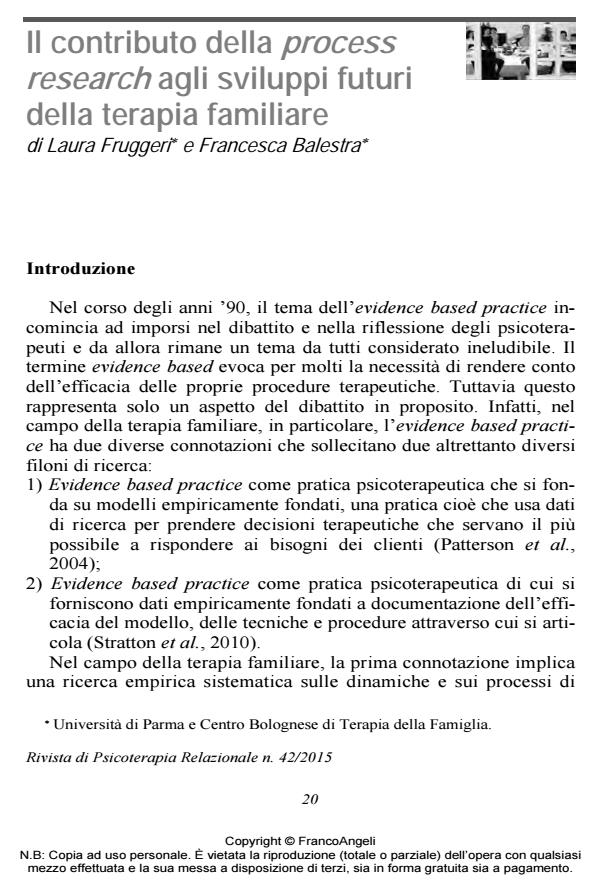Il contributo della process research agli sviluppi futuri della terapia familiare
Titolo Rivista RIVISTA DI PSICOTERAPIA RELAZIONALE
Autori/Curatori Laura Fruggeri, Francesca Balestra
Anno di pubblicazione 2015 Fascicolo 2015/42
Lingua Italiano Numero pagine 19 P. 20-38 Dimensione file 73 KB
DOI 10.3280/PR2015-042002
Il DOI è il codice a barre della proprietà intellettuale: per saperne di più
clicca qui
Qui sotto puoi vedere in anteprima la prima pagina di questo articolo.
Se questo articolo ti interessa, lo puoi acquistare (e scaricare in formato pdf) seguendo le facili indicazioni per acquistare il download credit. Acquista Download Credits per scaricare questo Articolo in formato PDF

FrancoAngeli è membro della Publishers International Linking Association, Inc (PILA)associazione indipendente e non profit per facilitare (attraverso i servizi tecnologici implementati da CrossRef.org) l’accesso degli studiosi ai contenuti digitali nelle pubblicazioni professionali e scientifiche
I terapeuti familiari sono sempre più sollecitati a documentare l’efficacia della terapia attraverso la ricerca d’esito, che valuta se la terapia familiare funziona; e la ricerca di processo, che descrive come funziona. Prendendo in considerazione il contributo di una serie di studi volti a documentare l’interazione fra terapeuta e famiglia e i processi di cambiamento osservabili nello strutturarsi del dialogo terapeutico, l’articolo riflette sulle implicazioni della ricerca di processo per la pratica e per la formazione nell’ambito della terapia familiare sistemica.
Parole chiave:Evidence based practice, ricerca processuale, terapia familiare, dialogo terapeutico, dialogismo, posizionamento
Laura Fruggeri, Francesca Balestra, Il contributo della process research agli sviluppi futuri della terapia familiare in "RIVISTA DI PSICOTERAPIA RELAZIONALE " 42/2015, pp 20-38, DOI: 10.3280/PR2015-042002